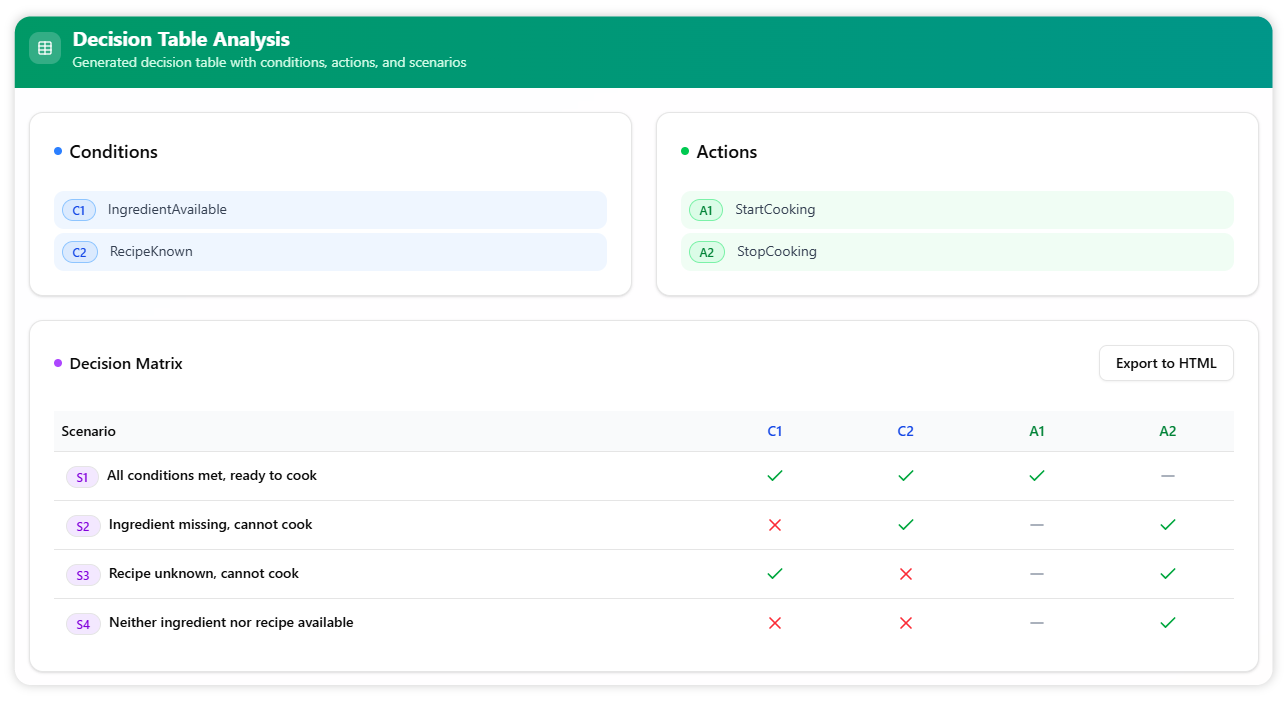Now Reading: What Are Decision Tables? Simplifying Complex Scenarios in System Design
-
01
What Are Decision Tables? Simplifying Complex Scenarios in System Design
What Are Decision Tables? Simplifying Complex Scenarios in System Design
Think of preconditions as the rules you need to follow before you can even start a process. In system design, a precondition is something that must be true or a specific state that the system and its actors must be in before a use case can begin. They set the stage, making sure everything is in place for a successful interaction.
A Simple Analogy: Getting Ready to Cook
Before you start cooking a meal, you need to check if you have all the ingredients. In this analogy, having the ingredients is the precondition. If you don’t have them, you can’t start cooking. Similarly, a system needs to meet certain conditions before a user can perform an action.

Examples from Everyday Life
Preconditions are all around us. Here are a few examples:
Boarding a Bus
Use Case: Board the bus.
Preconditions:
- The bus has arrived at the stop.
- You have a valid ticket or pass.
Watching a Movie Online
Use Case: Stream a movie.
Preconditions:
- You are logged into your streaming account.
- Your internet connection is active.
Why Preconditions Are So Important
By defining preconditions clearly, you can:
- Prevent Errors: They ensure a use case never starts from a bad or unexpected state, avoiding a range of potential issues.
- Improve Clarity: They provide a simple way to communicate the exact starting requirements to both developers and testers.
- Simplify Testing: Preconditions make it clear exactly what a test needs to set up before running a test case.
A Simple Checklist for Writing Preconditions
When you write a precondition, make sure it is:
- Specific: Don’t write “The user is ready.” Instead, write “The user is logged in.”
- Testable: Can a tester confirm the condition is true? “The account has a positive balance” is testable.
- A “Yes/No” Question: The precondition should be something that is either true or false.

